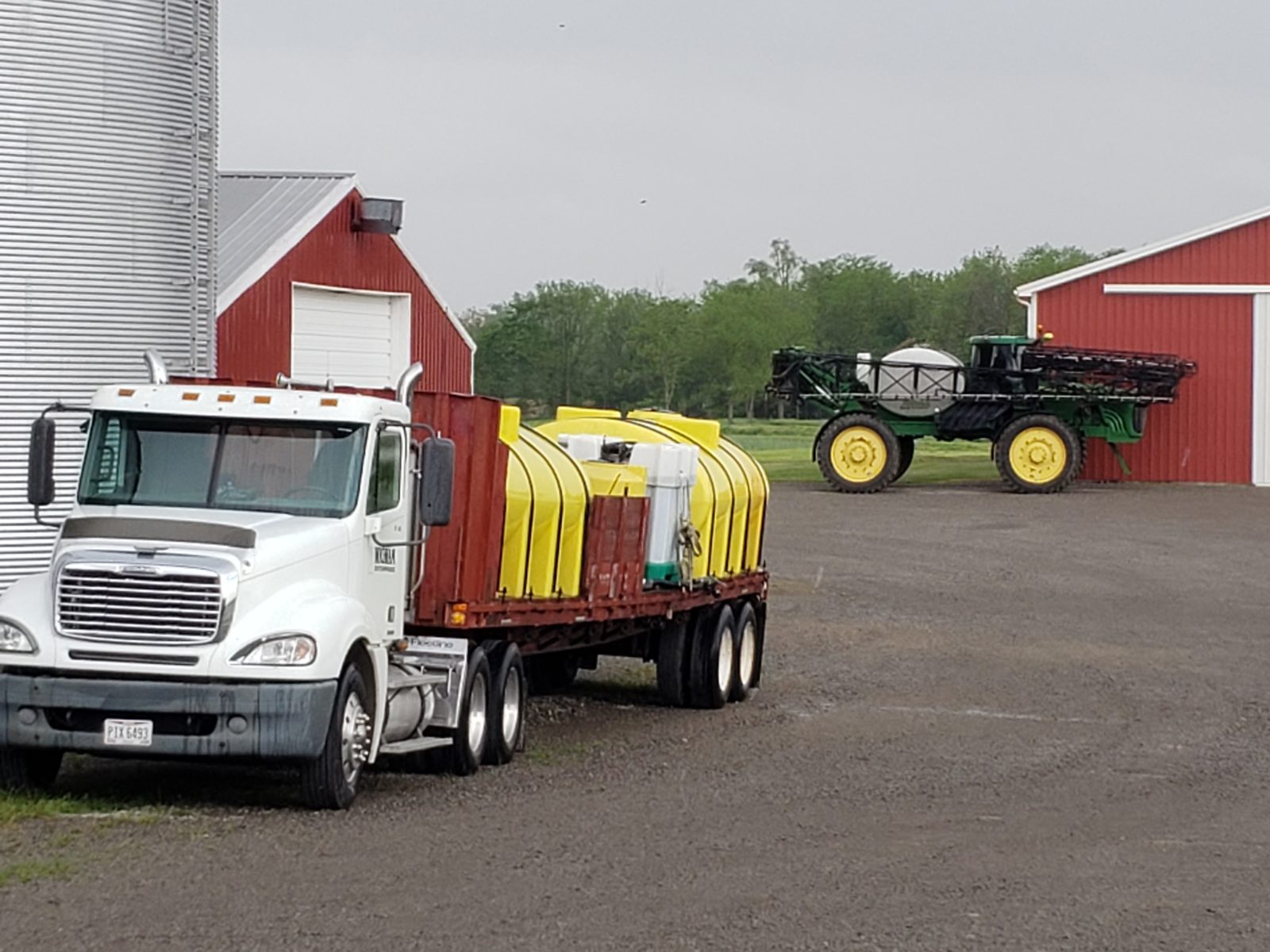As of late May, we have about one-third of our corn and soybean fields planted. Our winter wheat continues to look really good. That’s great news. But the weather continues to be a challenge.
Whenever conditions allow, we are working in the fields, and whenever we experience rain or high winds, we are waiting to get back to work. We were able to work for a few days in mid-May, but then had to wait after a heavy 7.5-cm, or 3-inch, rain. Our neighborhood also had straight-line winds that damaged a neighbor’s barn and caved in a grain bin, and pushed a truck off the road. Then we had another short window in late May to plant a couple more fields as they got dry enough before getting rained out again.
I am optimistic that we will get our crops planted, even if it takes longer than we prefer. The weather forecast is predicting warmer weather, which will help the fields to dry out more quickly.
Farming is a combination of planning and adjusting to the weather. We’ve experienced that as we manage our cover crops this spring. As mentioned before, we have a beautiful, textbook cover crop of rye and hairy vetch that have contributed to soil tilth and healthy root mass. But as we keep getting rain, these crops keep growing, so we’ve been learning a lot about how to manage them.
We have found that although the soil surface under all that heavy cover crop is damp and clammy, at 5 cm (or 2 inches) deep, the thick root mass makes for a nice seed bed. We were planting into that heavy cover crop when we got rained out in mid-May, and haven’t been able to finish it yet. While waiting out the rain, we changed half of the rubber closing wheels on our planter to a new knobby style to help collapse the seed trench side wall to ensure that we get the needed seed-to-soil contact.
We still need to burn down that cover crop with herbicide so it stops growing, and we plan to do it the next time we have calm winds and no rain.
In another field, we did have our neighbor make hay out of the cover crop. He took a couple days to cut and wrap the hay for his cattle, and then we planted into the stubble. That field planted fairly well with a few adjustments.

We know that we will have to watch the fields that have been in cover crops carefully for pests like slugs or ground moles. Overall, we’ve been happy with our cover crops, though we would rather have planted earlier. Next year we will probably again split fields between cover crops and conventional systems to help spread risk as we navigate unpredictable weather and conditions.
The rain delays also allow us to keep waiting for delivery of the new food-grade soybean variety we hope to plant for seed this year.
 While the fields are still too wet, we’ve been spraying weeds on bin site, driveways and under the board fence with a leftover mix of herbicides saved from cleaning out the sprayer between different crops last summer. We’ve also been making needed equipment repairs, like to this batwing mower.
While the fields are still too wet, we’ve been spraying weeds on bin site, driveways and under the board fence with a leftover mix of herbicides saved from cleaning out the sprayer between different crops last summer. We’ve also been making needed equipment repairs, like to this batwing mower.
Despite the starts and stops, we are making progress toward getting a good crop planted.

